JMTS 017: A Stay in a Traditional Farmhouse
Thatched-roofs, open hearths, and sustainable tourism in rural Japan
My host, Takahashi-san, is preparing the evening meal in a clay pot arranged over a small fire in an irori, or sunken hearth. He adds scoops of miso, cabbage, mushrooms, tofu, spongy fu (wheat gluten) balls, and chicken, then puts on the lid to let things simmer. As we sit and chat around what basically amounts to an indoor campfire, I try not to worry as smoke begins to permeate the room.
It’s my first night in Miyama 美山, a region literally named ‘beautiful mountains’, located a mere 35 miles north of Kyoto, but a world away. I’m spending the night at a minshuku, a type of casual family-run inn typically found in the Japanese countryside. Here at Farmhouse Inn Kurian, the experience feels more like a homestay: I’m the only guest, and I’m sleeping on a futon in their only spare room.
Until tunnels were built through the mountains in the early 20th century, the region was isolated, and it retains a distinctive, self-sufficient culture. Like most of rural Japan, it faces big challenges: an aging, shrinking population; lack of economic opportunity; migration of young people to big cities; and adjacent problems like empty schools and abandoned homes. But recently, the Miyama area has become recognized as a model of sustainable tourism1, and, especially after the crowds of tourists in Kyoto, I’m eager to see what’s happening here and experience another side of life in Japan.
When the Takahashis purchased this approximately 200-year-old thatched-roof farmhouse, it had been vacant for five years. They spent about a year refurbishing it, and while they made some concessions to modern living, like relocating the toilet and bath from a separate outdoor structure to inside the home, they were keen to keep the irori functional. For their guests, a country meal cooked over a fire is a highlight, and an opportunity to get a taste of a vanishing, rural lifestyle firsthand.
Earlier in the day, I’d arrived by bus in the tiny hamlet of Kayabuki no Sato, or Thatched Roof Village, the centerpiece of the area (and a mere 10 minutes drive from Farmhouse Inn Kurian.) With its concentration of 39 massive thatched-roof buildings, oriented in the same direction, and encircled by mountains, the village is undeniably picturesque, evoking an agrarian ideal. But remarkably it is also a real place, and the majority of the thatched-roof structures are private homes still inhabited by local villagers.
After dropping my suitcase at the welcome center (well-situated outside the village, along the main road), I head up the hill to explore. On a weekday in early November, it isn’t too crowded. There are a couple of cafes, a gallery, two small museums, and that’s about it. No trinket shops. No souvenir stands. Instead: everyday life. Strolling around, I spot laundry hung out to dry, and numerous well-tended vegetable gardens.
The central appeal is the atmosphere created by the thatched-roof architecture — natural, nostalgic, inviting the feeling of time travel. Most of the farmhouses are 100-200 years old, built in the Kitayama style. The massive hip-and-gable roofs are capped with horizontal and X-shaped beams that not only weigh down the thatch, but also add drama to the roofline. At the gable end of the roof, there’s an opening for ventilation, typically decorated with a wooden board featuring a family crest, or kamon.
Ventilation, I discover, is actually central to the design of thatched-roof dwellings. They are pleasant to live in because the roof breathes — air flows through the thatch and keeps the house cool in summer, or so they say. (Fun fact: the ability of wind to move through the thatch also helps prevent the entire roof from getting blown off in a typhoon.)
Since the majority of the buildings here are private residences, visitors can’t enter them. But inside the Miyama Folklore Museum, housed in a restored thatched-roof farmhouse in the center of the village, the interior layout becomes more clear. Despite the impression of scale from the exterior, the living space is actually quite small, and confined to the ground floor. The seemingly disproportionate size of the roof is to due to the thickness of the thatch and the necessity of a steep slope to shed heavy snow.
The irori hearth is situated in the middle of the living space, where it traditionally served a double purpose: not only was it the primary source of heat in the home, but also the smoke discouraged bugs from taking up residence in the thatch. The smoke from the charcoal would have wafted upwards, through a lofted bamboo grid where replacement thatch was stored, up into the rafters and out. Back when thatched-roof homes were heated in this way, the life span of the thatch was typically 10-20 years longer than today.
Long before ‘sustainable’ emerged as a buzzword, generations of villagers in Miyama have been making the most of local, natural resources, carefully managing and preserving them. The self-sufficient culture revolves around living in harmony with nature, and is perhaps best exemplified by thatch. Thatching materials — layers of pampas grass, rice straw, and hemp reed — are infinitely renewable, so long as there is soil, sun, and water. Eventually, when a thatched roof decays and needs repair or replacement, the old thatch is recycled as fertilizer and mulch, returning to the soil it was grown in.
In the past, replacing thatch would have been a task shared by the community, organized through a kind of mutual help association. (Same goes for planting and harvesting rice.) But nowadays, thatch work is done by a dwindling number of professional craftspeople2. Outside of heritage villages like Kayabuki no Sato and a few others3, thatched-roof buildings are rapidly disappearing across Japan, in large part because they’ve become so expensive to maintain. The majority of those that remain are capped with a protective sheathing of tin to prolong the roof’s lifespan.
Luckily, since its designation in 1993 as an “Important Preservation District for Groups of Historic Buildings”, Kayabuki no Sato receives local and national government support to help maintain the thatched roofs (covering nearly 80% of the expenses). And pampas grass is still cultivated in three plots around the village, managed by local residents on the thatch grass committee.
It’s possible to visit Miyama as a day trip from Kyoto, or on a bus tour, but for the most enriching experience, opt to spend the night in a traditional guesthouse or inn.
Established in 2016, the Kyoto Miyama Tourism Association functions as an information hub and central booking office for about 25 different accommodations scattered among Miyama’s many hamlets. There are intimate farmstays, or, for a larger group, entire house rentals. Some but not all of the properties have thatched roofs or irori hearths. Many offer hands-on cultural experiences like cooking, farming, fishing, or craft workshops, arranged in advance. Two of the guesthouses (Matabe Thatched B&B and B&B Hisaya, both unavailable at the time of my booking) are even located right in the middle of the Kayabuki no Sato. The English-speaking staff at the association can assist with all arrangements, determine availability, coordinate a pickup if arriving by public transportation, process payment, and more.
Back at Farmhouse Inn Kurian, the chicken nabe pot is ready. Following Takahashi-san’s lead, I ladle out some rich broth, and morsels of vegetables and chicken. Our conversation is lively and the dish is hearty and delicious, nourishing my body and spirit.
Maybe their nonstandard irori setup would benefit from some improved ventilation, but who am I to say. The Takahashis aren’t living in a museum, after all. Their life in the countryside is presented without polish or pretense, challenging and messy and beautiful.
And if one thing is certain it’s this: they absolutely love sharing it with visitors.
The next morning, after a traditional Japanese breakfast of grilled salmon, miso soup, and assorted local vegetables (see JMTS 015 for an ode to this supremely satisfying meal), I join my hosts on a stroll through their hamlet. We pass a few vacant homes (which I joke about buying), study a yuzu citrus tree up close, and stop and chat with their neighbor, who is peeling persimmons. He collects them from the trees in his yard, and is hanging them to dry from the eaves of his house, employing a method that dates back centuries. With sun and good air flow - and regular massages, by hand - the astringent fruit will transform over time into something jammy and sweet, dusted with a bloom of natural sugars. What a treat a dried persimmon must have been, during a long, harsh, snowed-in winter in these mountains.
Unfortunately I won’t be around to taste the hoshigaki when they’re ready, a month or two from now. But watching this man, reaping the natural bounty, steadily at work putting food by, I can sense the continuity of countless generations. The gratitude towards nature, the rhythm of the seasons, the harmonious circle of life in Miyama.
INFO:
Kayabuki no Sato
Kyoto Miyama Tourism Association
23 Shimo agake Miyamacho, Nantan-shi, Kyoto, 601-0722, Japan
Tel.: +81-771-75-9030
Instagram: https://www.instagram.com/kyotomiyama/
ACCOMODATION:
Farmhouse Inn Kurian - https://miyamanavi.com/en/stay/kurian
Guesthouse Yu - https://miyamanavi.com/en/stay/guesthouse_yu
Hanabusa - https://miyamanavi.com/en/stay/hanabusa
RATE:
Standard Plan (2 meals and one night stay)
Adult: from JPY9,350 (~$60)/pp
Additional fee for hands-on experiences, and add-on meals.
ACCESS:
Miyama’s Kayabuki no Sato can be reached by train and bus from JR Kyoto Station in ~2 hours, (or in 80 min. by car from Kyoto City.)
Take a local or rapid train on the JR San-in line from JR Kyoto Station to Sonobe Station. Transfer across platform at Sonobe for train to JR Hiyoshi Station. At Hiyoshi Station, transfer to the Nantan City bus to the Kita stop at Kayabuki no Sato. Return bus times should be well-researched and planned in advance.
Note: There is very limited space for luggage on the Nantan City bus. For a 1-night stay in Miyama, consider storing your luggage in a Kyoto Station locker, and only traveling with a small overnight bag. Or try utilizing the convenient takkyu-bin luggage forwarding service to send your luggage from Kyoto to your next destination after Miyama.
What do you gravitate towards when you travel — city or country? Would you live long-term in a thatched roof house? What else interests you in rural Japan? I love hearing from you. Thanks so much for being here!
👋 O genki de ne,
Julia Morrison
Recognized in 2021 by UNWTO/UN Tourism as a “Best Tourism Village”, a “global initiative to highlight those villages where tourism preserves cultures and traditions, celebrates diversity, provides opportunities and safeguards biodiversity.”
There is currently only one professional thatcher in the Miyama region, Haruo Nishio, a colorful character whose mission in life is to promote the culture of thatch. He also runs a business that restores and rents out thatched-roof homes to groups, Miyama FUTON&Breakfast, and a goofy Instagram account, @japanesethatchinguy, with more than 100k followers.
Shirakawa-go in Gifu Prefecture and Gokayama in Toyama Prefecture, both UNESCO World Heritage sites; Ouchijuku in Fukushima Prefecture





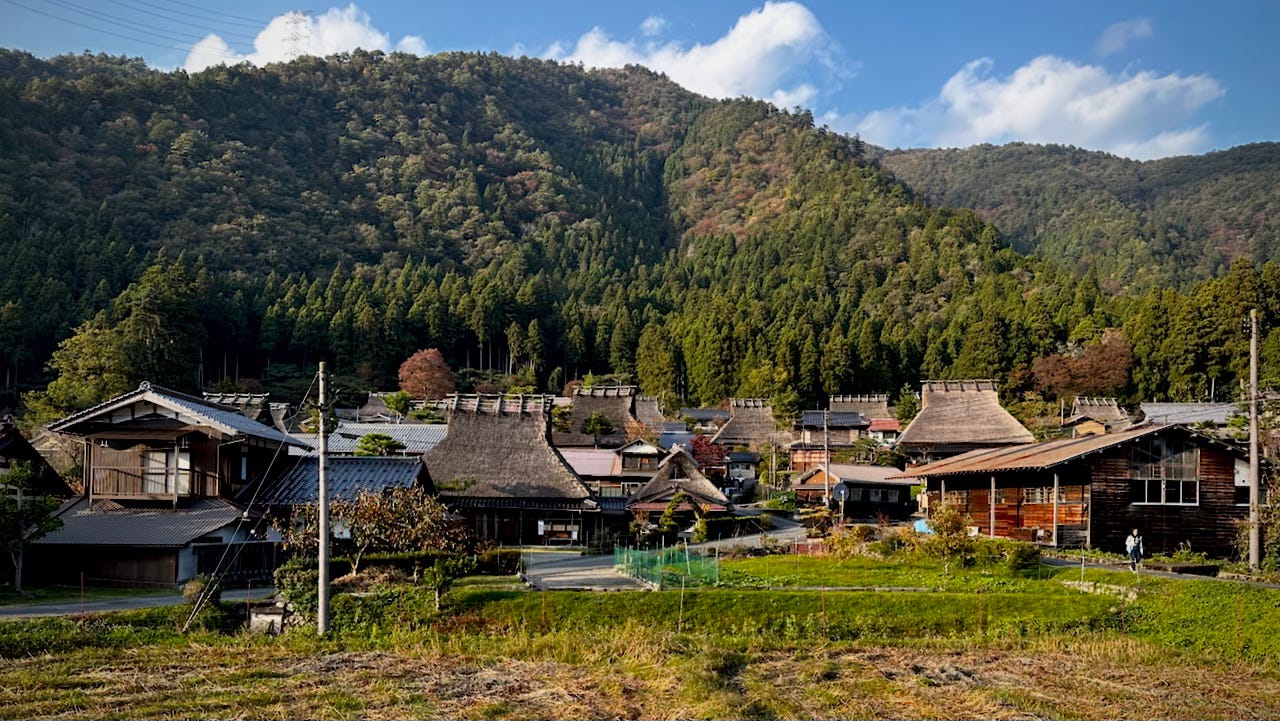
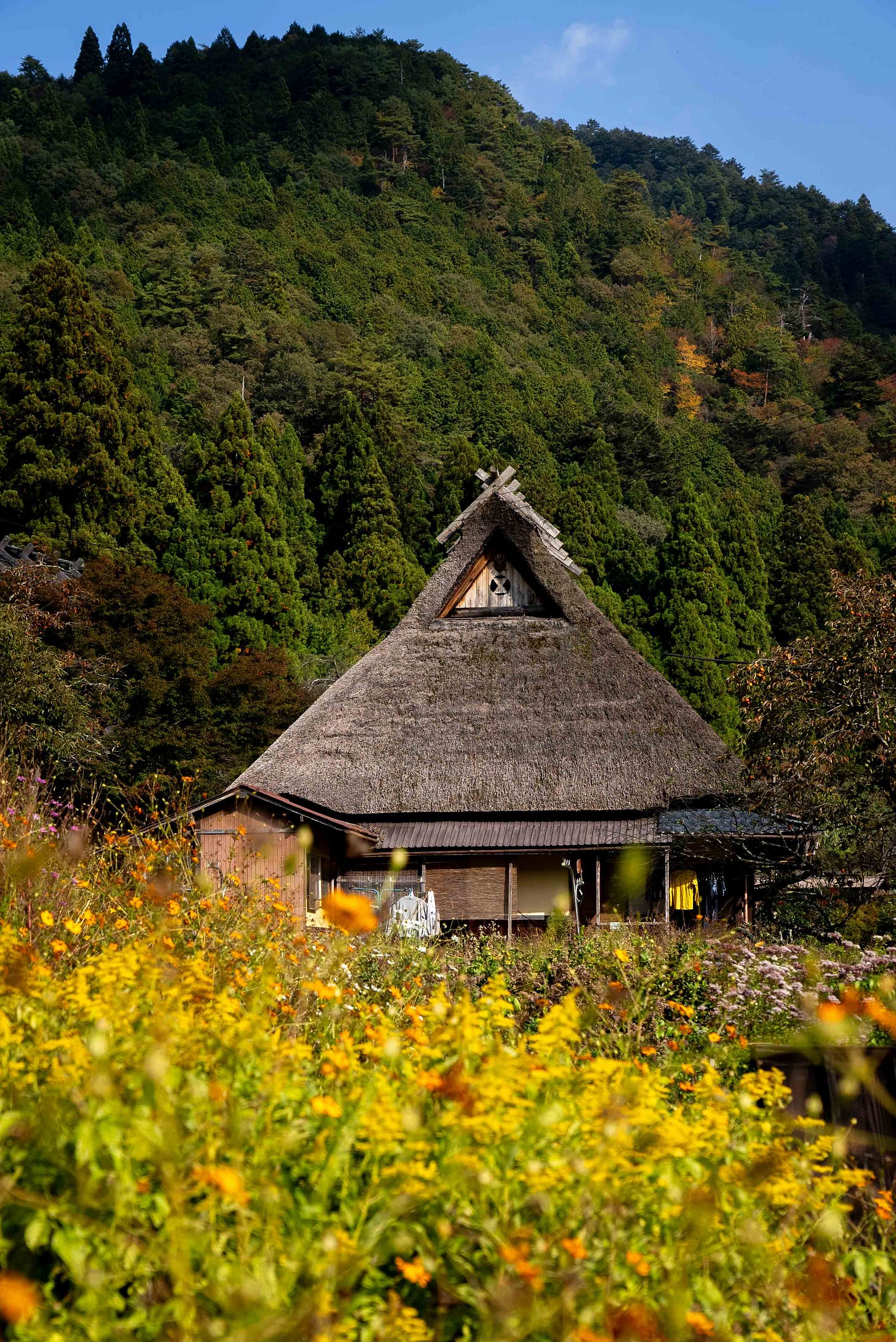


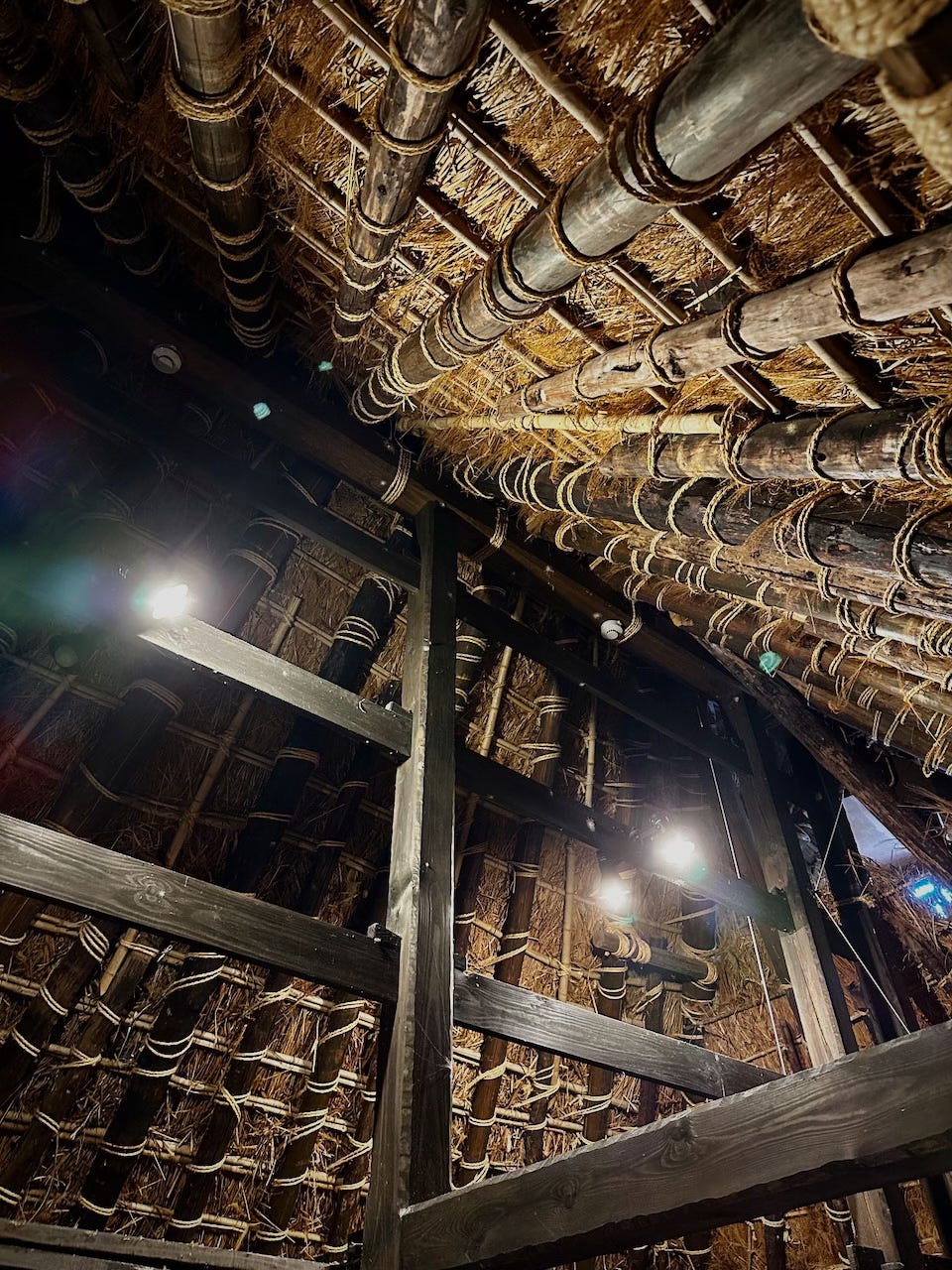
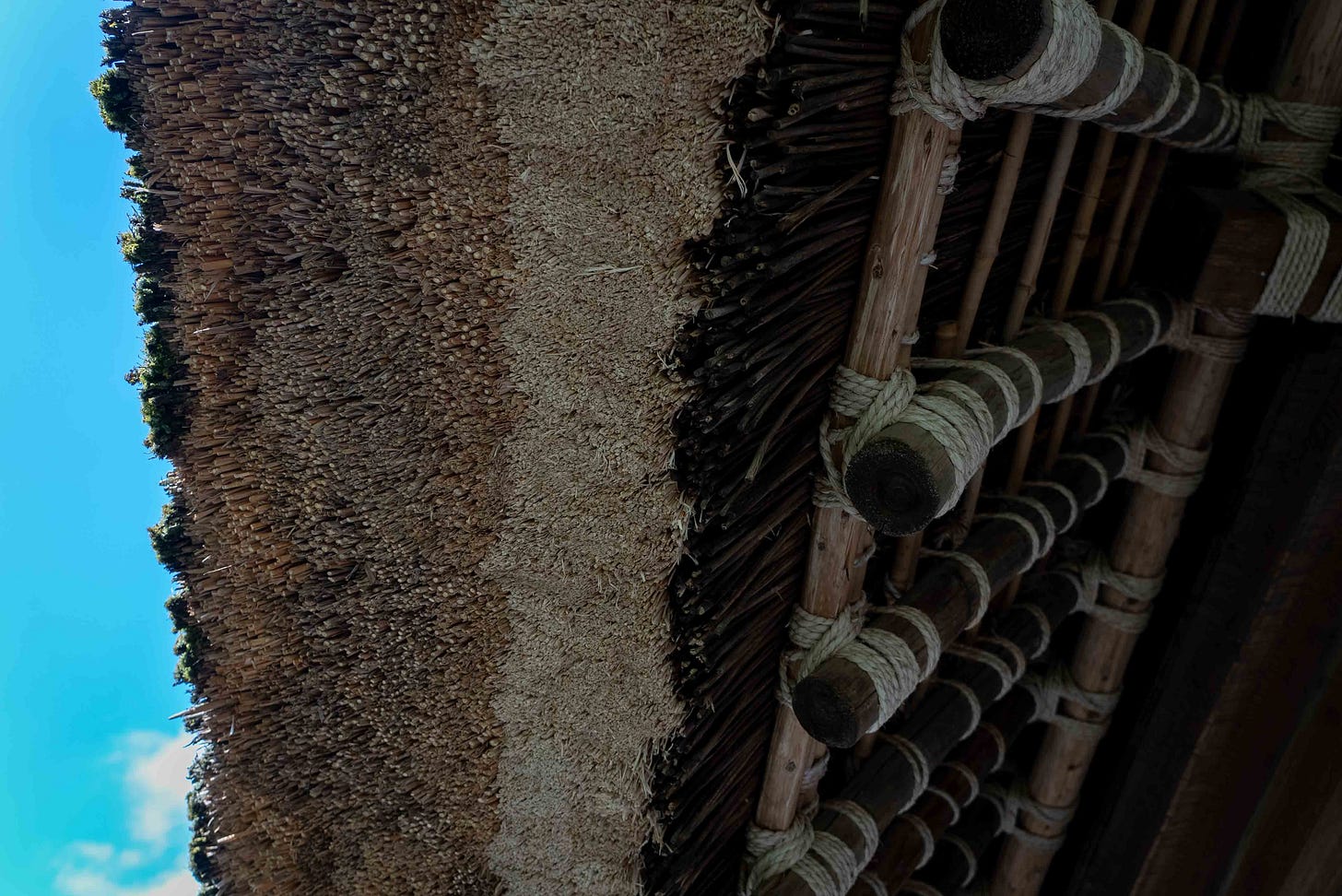


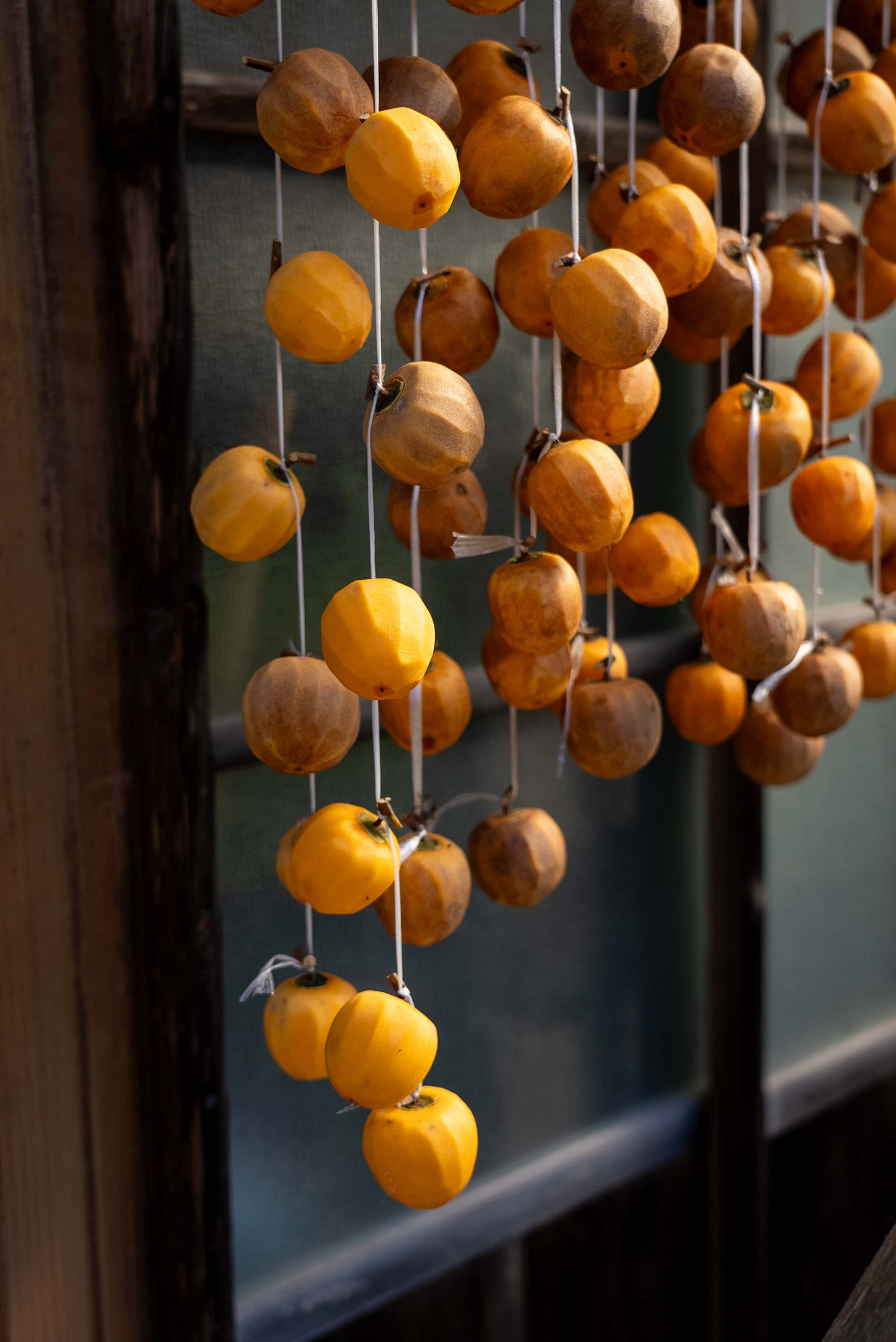
What a fun and informative read! I loved meeting the characters and marveling at the economy, harmony and delights of daily life in rural Japan. A dried persimmon mid-winter — what an evocative musing!